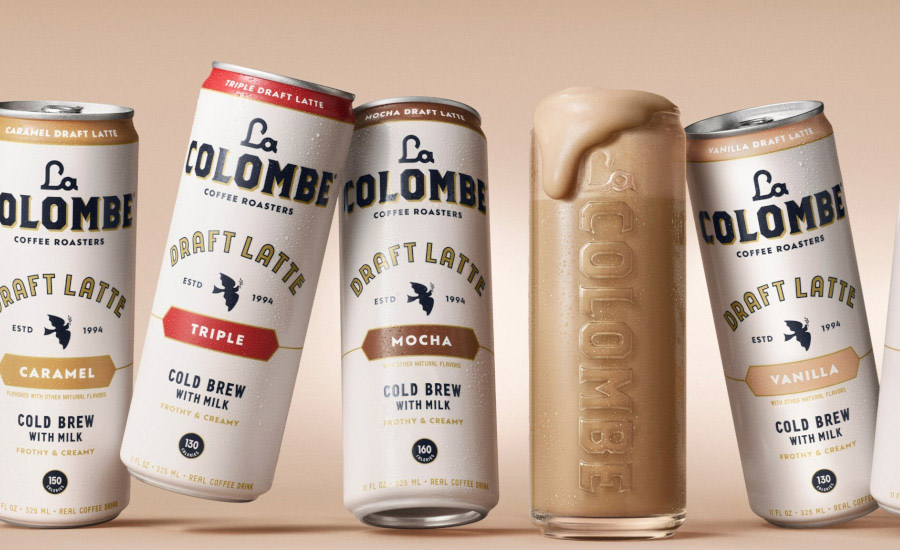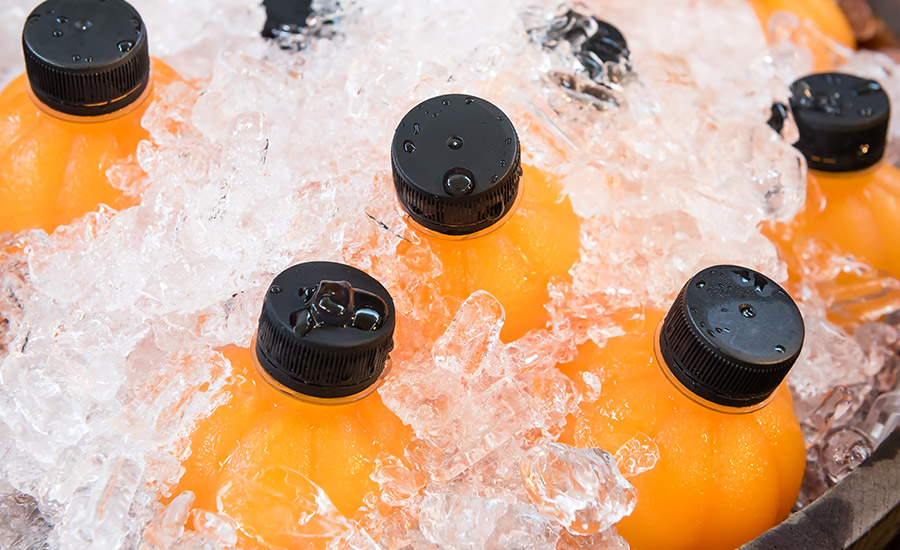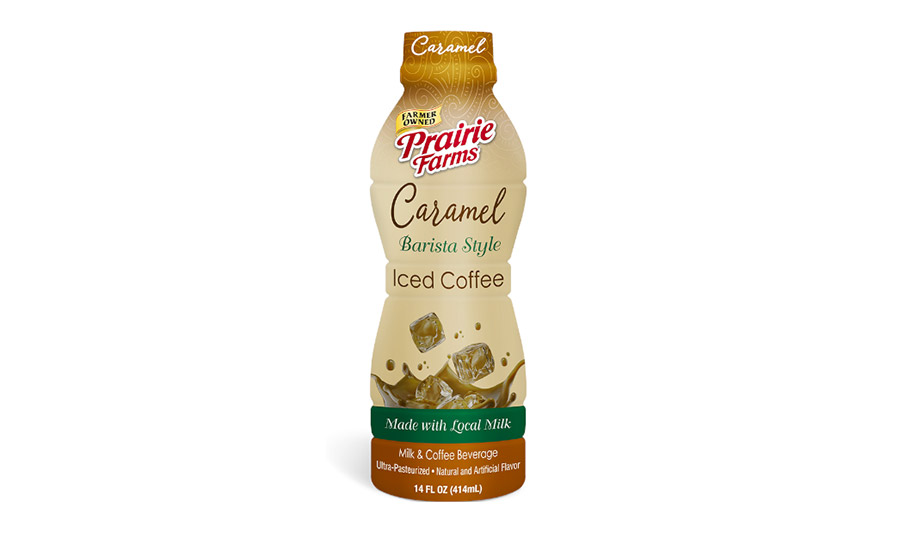RTD beverage category offers big opportunities
Increasing demand for dairy-based products, rising health consciousness among consumers, and the availability of diverse flavors and varieties are big draws.

Photo courtesy of kit yu / iStock / Getty Images Plus.
Milk, tea, coffee, aseptic juices, and bottled juices, major components of the ready-to-drink (RTD) dairy beverage market, continue to grow in terms of dollar sales. As Dairy Foods reported in January, many of these beverages have seen unit sales declines, however, according to Circana data, with an important exception being canned juices, whose dollar sales rose 8.5% to $1.43 billion and unit sales increased by 2% to 627 million for the year ending November 5, 2023.
According to Fortune Business Insight, the global RTD beverages market size is projected to grow from $766.69 billion in 2024 to more than $1 trillion by 2032, at a compound annual growth rate (CAGR) of 6%, citing rising demand in increasing urbanization and hectic lifestyles.
The RTD market is driven by “factors such as the increasing demand for dairy-based products, rising health consciousness among consumers, and the availability of diverse flavors and varieties. Additionally, the growing popularity of functional dairy drinks, such as probiotic and fortified beverages, is further contributing to market growth,” adds a report from Profi Research.
“The RTD dairy beverage category is massive and filled with opportunity. Too often, we focus on the decline in fluid milk sales, but there remain pockets of significant growth in segments like flavored milks, designer milks and drinkable yogurts,” stresses Mark Fahlin, category manager at Wayzata, Minn.-based Cargill.

“While overall consumption of fluid white milk is down from its peak in the 1970s, household penetration rates are still in the mid-90% range. That’s a figure that is enviable for most packaged food categories, especially given the absolute explosion in packaged beverage options over the last 40 years,” Fahlin adds.
What’s hot
Many trends are driving the RTD dairy beverage space, with high protein topping the list. “Dairy protein sources such as whey, milk protein concentrate, and micellar casein are key ingredients that deliver protein in these applications. However, formulating these dairy proteins into high protein RTD applications can be challenging, impacting production efficiency, formulation stability, and ultimately consumer appeal,” says Maria Tolchinsky, global dairy and beverage lead, ICL Food Specialties, St. Louis, Mo.
Typical challenges include fouling, age gelation of the final RTD beverage, and instability due to pH drift, Tolchinsky explains. “These challenges are even more pronounced when manufacturing on-trend products such as high-protein coffee beverages, lattes, or matcha, as well as products with vitamins and mineral fortifications.”
On the ingredients side, it’s all about protein, with the more, the better, Fahlin suggests. “There’s already a blurring of lines between RTD beverages and specialized nutrition products, and those lines will only get fuzzier as more brands lean into the unshakeable appeal of protein,” he states. “Drinkable yogurts are another hot trend and one with plenty of runway for growth. In some parts of the world, drinkable yogurt makes up 50% or more of the overall yogurt category. Here in the U.S., it’s only around 6 to 7%. Consumers love the convenience and portability of these products; it’s definitely a category to watch.”
Although protein is huge, RTD trends extend way beyond the ingredient. Expanded flavors and functionality are some of the things currently driving the market.
“In addition to RTD protein beverages, the hottest trends in RTD beverages are functional beverages with many brands succeeding in the better-for-you energy drinks and expanding the hydration options outside of traditional sports drinks,” states Niki Kennedy, director of insights and content at Chicago-based Glanbia Nutritionals. “What we do know for certain is that no matter how nutritious a beverage is, taste is more important to consumers than nutrition in all functional beverage categories besides protein shakes, where taste and nutrition are equally important.”
Specialized or personalized drinks are growing and appealing to Gen Z, adds Shannon Fitzgerald, marketing manager, Balchem, Montvale, N.J. “Functionality is a hot trend in RTD beverages. Functionality includes added vitamins and minerals, pre/probiotics, caffeine, superfoods, amino acids, electrolytes, etc,” Fitzgerald says, citing Mintel research.
Osage Food Products is seeing smaller dairy processors increasing the number of flavor offerings beyond the traditional chocolate and strawberry milk. “Flavors like Raspberry Milk, Root Beer Float Milk, and Chocolate Peanut Butter (allergen free) are increasing,” reveals Mike Hengelsberg, director, business development, Flavors and Functional Ingredients, for the Washington, Mo.-based company. “Similarly, we’re seeing the beginning of a trend with dairies adding protein to their milk to produce a nutritional shake beverage in various flavors.”
Additionally, Corbion is seeing an intense focus on clean label for health-conscience consumers; specifically demand for gluten free, organic, and sugar-free. “We also are seeing a shift in reduced- and no-sugar options to the use of newer natural alternatives; for example, stevia and monk fruit are gaining popularity,” Megan Passman, global insights manager for the Lenexa, Kan.-based company, maintains.

Sandra Wilson-Eamer, flavor development manager at FlavorSum, points to some brands highlighting lower fat content and added vitamin D to boost the nutritional profile. “Others include anti-inflammatory ingredients like matcha or turmeric. Brands also add fruit prep (which may contain vegetable purees) for added taste appeal,” the executive for the Kalamazoo, Mich., and Mississauga, Ont.-based company says.
A final trend to highlight is “Functional Forward,” tying in with the argument of hectic lifestyles and hence the urge for convenient solutions that ideally offer added value. “RTD beverages offer a convenient delivery form and offer great potential to be fortified with specific ingredients with the ingredients chosen according to brand positioning, be it digestive health, immunity, heart health or bone and joint health, to name just a few,” suggests Juliana Hirata, area sales manager, North America and Canada, at BENEO, Parsippany, N.J.
What consumers want
Now that the trends have been identified, it is time to determine if today’s RTD beverages are meeting the current needs of consumers. Any alteration between what is already available on the market and what consumers seek could provide significant opportunities for dairy processors.
According to Matt Hettlinger, technical sales manager, Ingredients, Cultures and Enzymes, Marshfield, Wis.-based Nelson-Jameson: “In RTD dairy, consumers are looking for low sugar or lactose-free, high protein content, convenience, and a price point that is competitive with other protein-based drinks.”
Fitzgerald states hydration, energy, and protein are important factors when it comes to RTD beverages, while Adams points to “gut health plus prebiotics/probiotics plus immune support.”
“Dairy drinks are seen as a healthy choice, but the growing focus on ultra-processed products means naturality is becoming a more important factor,” adds Alice Lee, technical marketing manager, GNT USA, LLC, Dallas, N.C. “Brands are starting to use more natural preservatives, flavors, and colors to ensure products retain their appeal among modern consumers.”
Consumers are trending toward reduced sugar in their beverages in general, and flavored milk is no exception to this trend, continues Hengelsberg. “The consumer palate has become more refined in this area, and they insist on a clean-labeled no-sugar-added product that tastes just like a sugar-sweetened product.”

Beyond the convenient consumption and portability of a RTD dairy beverage, people respond to the flavor and format variety, maintains Phil a’Becket, senior consumer insights manager, FlavorSum. “Choices include a range of fat and protein content, varying levels of protein, and popular fruit-based flavors. The calcium, protein, probiotics, and vitamins delivered through RTD dairy align with North Americans’ health and wellness goals. Pasteurized options provide longer shelf life than traditional dairy.”
To sum up, RTD products must — at a minimum — provide portability, the desired level of sweetness, and a refreshing taste, stresses Passman. “To succeed in the RTD beverage space, the product also must offer a functional benefit. According to Nielsen IQ, in 2023 energy was the most popular functional attribute across all RTD beverages, capturing $21.5 billion in sales; followed by muscle health at $3.6 billion; metabolism support at $1.6 billion; and brain health at $1.2 billion. Consumers are being proactive about their health, prioritizing prevention, and emphasizing health and well-being.”
RTD offerings
Now that we have today’s hottest trends matched to consumer RTD desires, let’s look at some recent ingredient offerings in this space. “Balchem has several customizable beverage systems that can meet any RTD need,” Fitzgerald notes. “Our systems are categorized into five groups: stabilizers, mouthfeel modifiers, nutrients, flavor and color, and sweeteners. By utilizing our beverage systems technology, manufactures can reduce potential production errors with consistent of supply and quality.”
BENEO’s faba bean protein concentrate (BeneoPro FB P60) is a plant-based alternative to animal proteins (e.g. from milk, egg) and other plant proteins (e.g. soy, pea). Its Palatinose (isomaltulose) has become an “increasingly important ingredient in RTD drinks for all activity levels,” and in digestive health/gut health, its prebiotic chicory root fibers inulin and oligofructose are natural and non-GMO, and “have become very popular with manufacturers for use in both food and beverage products,” says Hirata.
GNT USA’s EXBERRY Yellow Carotenes are suited to dairy drinks and can deliver bright and stable yellow hues. “They’re also made from highly sustainable saltwater algae, which serves as a carbon sink, has no impact on biodiversity, and doesn’t require any pesticide use,” Lee suggests.
Fiberstar has been working on new products that have improved suspending ability, viscosity, as well as an organic certified product line. “One example of these ingredients is the Citri-Fi 400 citrus fiber series,” notes Brock Lundberg, Ph.D., chief science officer for the River Falls, Wis.-based company. “This new ingredient is USDA organic certified and can be used at levels of 0.5% or less in many beverage applications while reducing or replacing other hydrocolloids and thickeners.”
Cargill offers a portfolio of offerings to help brands meet their sugar-reduction goals. Its new Sweety cocoa powders are a great example, pairing modest sugar reduction with great chocolaty taste.
“The Sweety range includes two distinct cocoa powders. Gerkens Revelry features stronger chocolate and cocoa notes, whereas Gerkens Bliss offers a milder chocolate flavor and heightened creaminess,” says Fahlin, who stresses the reduction will vary by product and it will depend on several factors, such as the amount of cocoa powder and sugar in original product, as well as on sensory profile preferences.
“For deeper sugar reductions, Cargill offers a broad portfolio of stevia sweeteners and natural flavor enhancers, including EverSweet,” he adds. “With EverSweet stevia sweetener. It’s possible for brands to achieve 50%, 70% or even go all the way to no-sugar-added flavored milks and other RTD dairy drinks.”
ICL offers JOHA functional phosphates and BEKAPLUS stabilizing systems to help functionalize and stabilize the protein in high-protein RTD beverages. “Our technical dairy experts understand the formulation and processing challenges for RTD beverages and work closely with customers to troubleshoot and develop solutions,” reveals Tolchinsky. “We have state-of-the-art facilities including UHT (ultra-high temperature) and retort processing capabilities that help our customers get to market faster.”
Global Organics offers Organic Agave inulin, a highly soluble fiber that is known for its prebiotic properties and Organic Freeze Dried Coffee, a “very straightforward ingredient that makes RTD beverages even more convenient to create. Mix it with water and add your preferred sweeteners or flavoring,” Arora states.
In addition, Global Organics provides Organic Turmeric and Ginger Juice, whereby processors can use turmeric and ginger juice to create a detox water, mocktail, wellness shots, or add it to herbal teas, notes Christine Campbell, category manager of Fruits and Vegetables.
The ABCs of RTDs
RTD beverages are rapidly evolving and could certainly look different in the near future. However, one thing is for sure: The expansion of functional benefits in the RTD beverage market is “here to stay, as consumers are prioritizing prevention and striving to stay healthy,” Corbion’s Passman prognosticates.
According to Nelson-Jameson’s Hettlinger, the landscape will change based on the emergence of more RTD plant-based dairy alternatives that can offer vitamin fortification and lactose-free products. “The dairy industry will need to respond with further emphasis on taste, texture, and nutritional functionality of current RTD dairy beverages to stay ahead,” he says.
Increased interest in brain health may lead some RTD dairy beverage brands to explore nutritional ingredients to support cognition, like l-theanine or GABA, FlavorSum’s a’Becket predicts. “With stress and anxiety leading concerns among North Americans, brands may also explore ingredients like ashwagandha, B vitamins, zinc, or additional magnesium to provide the desired support,” he says. “RTD dairy beverage brands, particularly milk, have started showcasing protein and recovery benefits for athletes. Brands can also highlight RTD dairy beverages' role in hydration, recovery, and relaxation, regardless of athleticism.”
ICL’s Tolchinsky believes an ongoing interest in plant-based and alternative dairy proteins will continue to alter the RTD beverage space. “We also see beverages as a key vehicle for adding nutrition and minerals missing from modern diets. The calcium and magnesium typical for dairy beverages may be lacking in some plant-based and alternative sources, so supplementation will continue to be important in this market.”
Cargill’s Fahlin sees a bright future for fresh, fermented beverages. “Drinkable yogurts are already making some in-roads, but options like buttermilk, lassi, and kefir have a big upside, too,” he says.
Protein’s “star will continue to shine” and brands will strive to push inclusion levels ever higher, he adds.
Plant-based proteins will get better, he continues, and precision fermentation “could serve as a big unlock for the category, too. This technology offers new possibilities, including lactose-free dairy proteins and the potential for more soluble proteins that enable even higher protein fortification levels.”
Glanbia Nutritionals’ Kennedy expects younger consumers will be invested in functional beverages more than their predecessors. “TikTok and its influencer-based marketing platform have been the launching pad of several functional sodas and other functional beverage brands,” she concludes. “As influencers and other celebrities use these platforms to promote their own products, we expect there to be a proliferation of options which may have a major impact on beverage supply chains and the co-manufacturing landscape. Another potential tipping point in the RTD beverage space is functional beverage availability in foodservice, particularly quick-serve restaurants.”
Looking for a reprint of this article?
From high-res PDFs to custom plaques, order your copy today!






